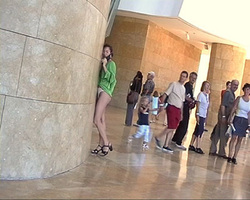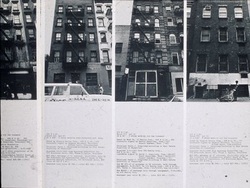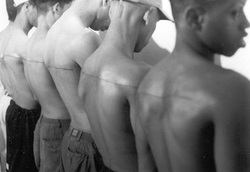"I am interested in the comment about the difference between community art and socially engaged art, which is something I am looking into at the moment. The obvious question is, is there a difference, and I suppose it maybe depends on what the outcome of the work is. If its made for a gallery, can it still be called community art? It would be interesting to hear peoples thoughts on this.
Attached is the next text. It is 'Becoming Common: Precarization as Political Constituting' by Isabell Lorey, and can be found here as part of the eflux journal No. 17. This essay looks at the issues of precarization through labour. A definition of Precarisation as put forward by theThe Frassanito Network is 'Precarious work refers to all possible forms of insecure, non-guaranteed, flexible exploitation: from illegalised, seasonal and temporary employment to homework, flex- and temp-work, to subcontractors, freelancers, or so called self-employed persons.'
Precarization is something I have started to become interested in, especially in terms of how artists work and live. It can be seen as an example of how alternative ways of working become part of the system. Working freelance, flexible hours was seen in the 1970's/80's as a way of working without the confines of the Monday-Friday, 9-5 office contracted hours. Is was seen as an alternative away from the structures and rules of the capitalist system. However, as is always the case it seems (see Avant Garde Art, such as Dadaism, Fluxus etc) these alternative ideas are consumed by the system and manipluated so to meet their needs. This way of working is now being questioned, as artists fight for pensions, contracts and artists rights, (see [a-n].)"
Attached is the next text. It is 'Becoming Common: Precarization as Political Constituting' by Isabell Lorey, and can be found here as part of the eflux journal No. 17. This essay looks at the issues of precarization through labour. A definition of Precarisation as put forward by theThe Frassanito Network is 'Precarious work refers to all possible forms of insecure, non-guaranteed, flexible exploitation: from illegalised, seasonal and temporary employment to homework, flex- and temp-work, to subcontractors, freelancers, or so called self-employed persons.'
Precarization is something I have started to become interested in, especially in terms of how artists work and live. It can be seen as an example of how alternative ways of working become part of the system. Working freelance, flexible hours was seen in the 1970's/80's as a way of working without the confines of the Monday-Friday, 9-5 office contracted hours. Is was seen as an alternative away from the structures and rules of the capitalist system. However, as is always the case it seems (see Avant Garde Art, such as Dadaism, Fluxus etc) these alternative ideas are consumed by the system and manipluated so to meet their needs. This way of working is now being questioned, as artists fight for pensions, contracts and artists rights, (see [a-n].)"




